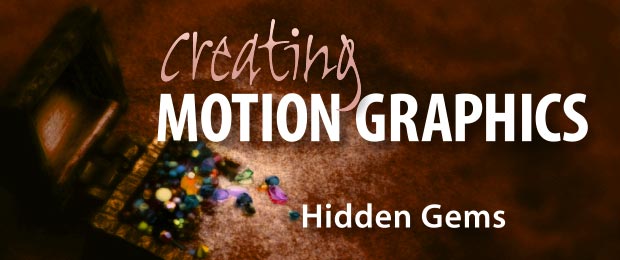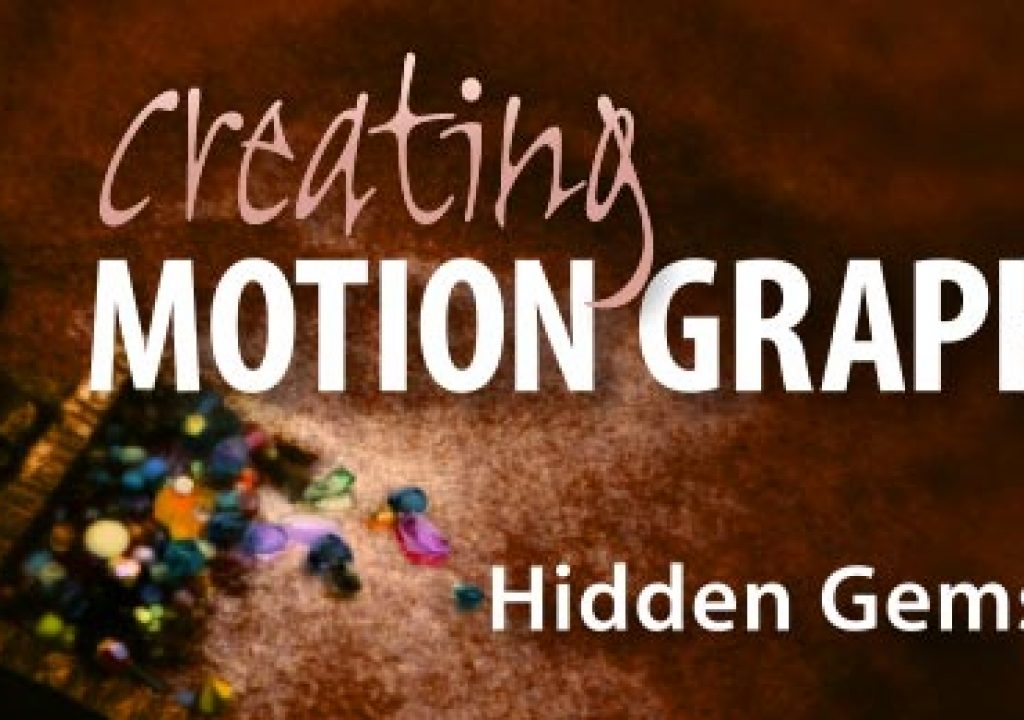
We’re going through our book Creating Motion Graphics with After Effects 5th Edition (CMG5) and pulling out a few “hidden gems” from each chapter. These will include essential advice for new users, plus timesaving tips that experienced users may not be aware of.
If you’ve ever noticed that a video played back on television looks different when played back on a computer, wondered why your photos don’t look the way you remembered them, or mused how colors on video look different than they do on film, you’ve experienced issues related to color management. Photoshop users and print professionals take color management for granted as a necessity in their line of work; conversely, very few video professionals are even aware of the issue – and virtually no video content creation programs take it into account. After Effects is a shining exception.
For those new to the subject, and without a copy of CMG5, we gave a brief overview in this free article on Color Management in AE CS3 on Artbeats.com. Color Management has evolved since then; CMG5 covers it as of After Effects CS5 (there were no substantive changes in AE CS5.5). CMG5 also discuss the related subjects of working in a linear working space (also known as 1.0 gamma), floating point (including high dynamic range imagery), and Cineon (a logarithmic color space that is common for film work). Below are a few tips from this chapter:
Afraid of Change?
Color management defaults to being turned off every time you create a new project. If you are worried that enabling it means After Effects will change your colors through its rendering pipeline (even if its for the better), keep this in mind: If the Project Working Space (which all colors are translated to on input, and translated from on output), a source’s Input Profile, and the Output Module’s Output Profile are all the same – such as HDTV (Rec. 709) – then no color values will be changed on a source’s trip through After Effects.
Color management only kicks in when a source came from a different source, and therefore has a different profile that needs to be converted in order to be treated properly. It is also handy for translating video files to display proper color on a different device such as a web page (sRGB is a good choice then), or directly on a computer (in this case, change the Output Profile to match the color profile of the monitor attached to the target computer).
If a source file has a color profile embedded (as is the case with most digital photos), After Effects will default to using that profile when color management is enabled. If the source is video, then After Effects will look at the codec used (and occasionally, the image frame size) to determine what profile to employ – for example, if the source uses the DV25 codec, After Effects will assign the SDTV NTSC Y’CbCr profile to it in a Color Management-enabled project. If After Effects can’t guess, it will assign the sRGB profile by default. The currently-assigned profile is visible at the top of the Project panel when a footage item is selected (as pictured at right).
Pictured at right is the default list of profiles provided; this list will change depending on what else you’ve installed on that specific computer, This list can be considerably longer if you, say, have a variety of printer paper profiles loaded; you may need to do some looking to find the correct profile.
In the example shown here, we captured the screen actions from a Mac and saved them using the H.264 codec for delivery as online video training. However, After Effects CS5 assumes anything that uses H.264 must be HDTV. Note in this figure how we used Color Profile Converter to change the incorrect HDTV profile AE assigned to the correct Apple RGB profile that reflects the display being viewed while the screen was captured.
Apply Color LUT (Look Up Table)
If an ICC profile does not currently exist for the file you wish to use, a back door way to convert it is to use the Utility > Apply Color LUT effect. This is the preferred way to handle ARRI Alexa footage, for example, using LUTs generated by the LUT Generator on the ARRI website (you must register – free – to access this page).
Color LUTs are also used to apply a creative color “look” developed on another system, as well as simulate particular film stocks and the such. In these cases, a good way to work is to place an adjustment layer above your final edit or composite, then add Effect > Utility > Apply Color LUT to the adjustment layer to make sure everyone gets the same treatment:
Synthetic Aperture’s Color Finesse – installed free along with the non-trial version of After Effects – has the ability to export Color LUTs. In this example, we exported one of their film simulation presets.
Linear Blending
You may be used to the typical computer representation where a 50% luminance value (such as RGB 127) results in an image that appears to be 50% gray on screen. However, this is not how our eyes work; they are much more sensitive to low lighting conditions. An example of this is the “18% gray card” that photographers may be familiar with: A paint chip that reflects only 18% of the light that hits it is perceived by our eyes to be 50% gray.
Therefore, After Effects offers an alternative way of working where internal calculations are “linearized” to match the way our eyes would perceive luminance levels. This approach is sometimes referred to as gamma 1.0 or linear light (the latter not to be confused with the blending mode of the same name). Visual effects artists prefer this mode as it more accurately reflects how our eyes would perceive the same scene – for example, bright areas of a motion-blurred object would be more prominent. It also has creative uses for the motion graphics artist:
When two images (top) are crossfaded normally, the result can appear a bit washed out during the middle of the fade (above left). When linear blending is enabled (above right), brighter areas – such as the sun, and the lights on the buildings – are more prominent during the fade, often creating a more interesting image (as well as more accurately replicating an “optical fade” performed with film). Footage courtesy Artbeats/Sky Effects and Establishments: Urban.
Highlight Compression
One of the main attractions of high dynamic range files – including HDR photos, HDR floating-point renders from 3D programs, Cineon film scans, and video from modern cameras such as the RED or ARRI Alexa saved in “log” (logarithmic) format – is that they contain detail in over-bright areas such as light sources. If your final destination does not support over-range color values (such as ordinary standard- or high-definition video), you can significantly improve the appearance of some shots by taming these hot spots so their hidden detail is visible in the normal color range.
When handling Cineon-like “log” files, the Cineon Converter effect includes a Highlight Rolloff parameter that attempts to bend these overbright areas back into the non-clipped visible realm, recovering some detail in the highlight without radically changing the midtones and shadows. For other floating point HDR files, you can apply Effect > Utility > HDR Highlight Compression to tame those highlights:
In the original HDR photos of a sunrise at top, the sun creates a wide hot spot in the clouds. By setting the After Effects project to 32bpc (floating point) color depth and applying HDR Highlight Compression, you can separate the sun from the glow surrounding it, while the remainder of the image remains mostly unchanged. Image courtesy HDR-VFX.
Trish and Chris Meyer share seventeen-plus years of real-world film and video production experience inside their now-classic book Creating Motion Graphics with After Effects (CMG). The 5th edition has been thoroughly revised to reflect the new features introduced in both After Effects CS4 and CS5 (click here for free bonus videos of features introduced in CS5.5). New chapters cover the new Roto Brush feature, as well as mocha and mocha shape. The 3D section has been expanded to include working with 3D effects such as Digieffects FreeForm plus workflows including Adobe Repouss©, Vanishing Point Exchange, and 3D model import using Adobe Photoshop Extended. The print version is also accompanied by a DVD that contains project files (CS5-only) and source materials for all the techniques demonstrated in the book, as well as over 160 pages of bonus chapters on subjects such as expressions, scripting, and effects.
We will be pulling a few “hidden gems” out of each chapter to share on ProVideoCoalition.com roughly every week. These will give you a taste for the multitude of time-saving tips, not-obvious features, little gotchas, and other insider knowledge you will find in CMG.
The content contained in Creating Motion Graphics with After Effects – as well as the CMG Blogs and CMG Keyframes posts on ProVideoCoalition – are copyright Crish Design, except where otherwise attributed.

